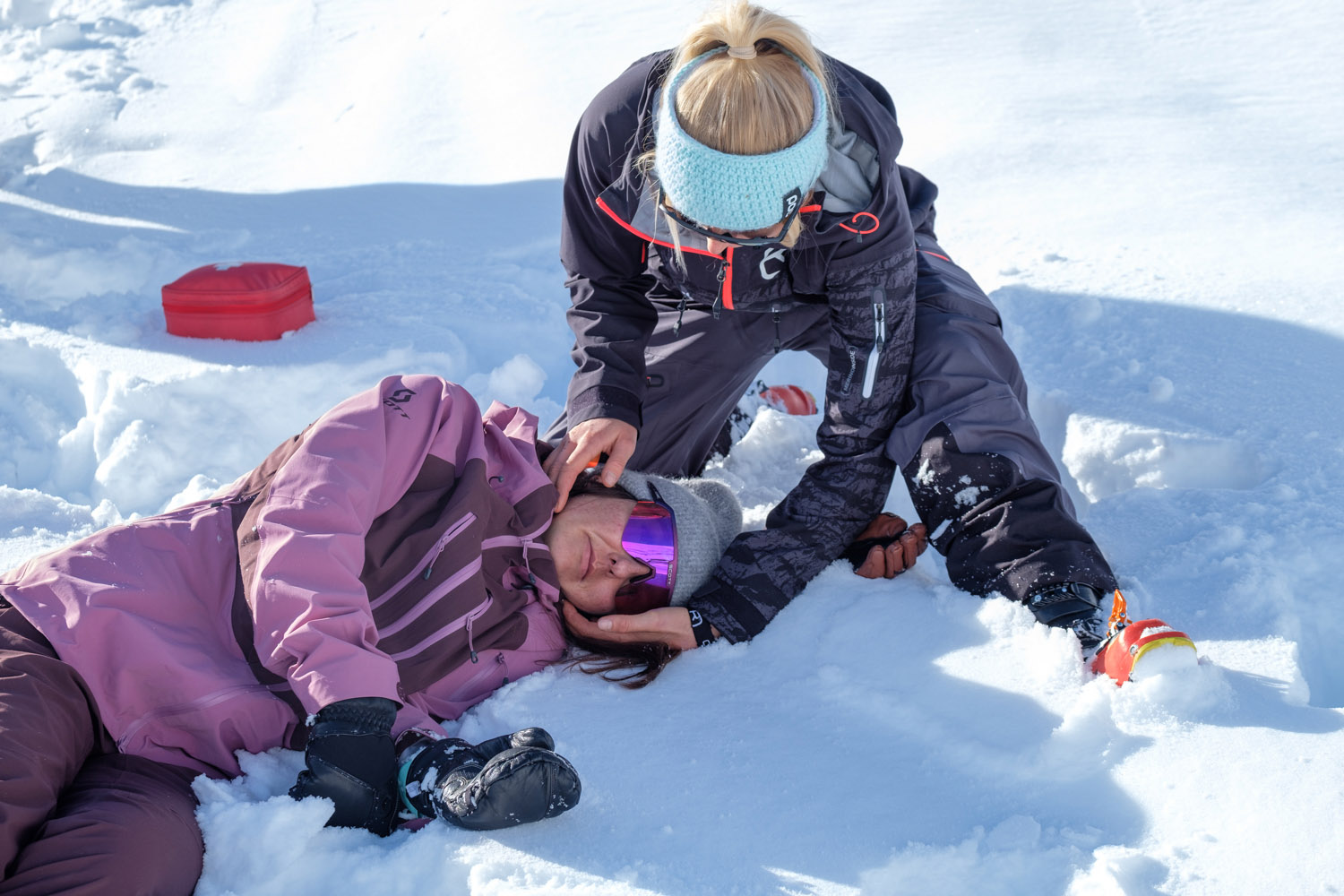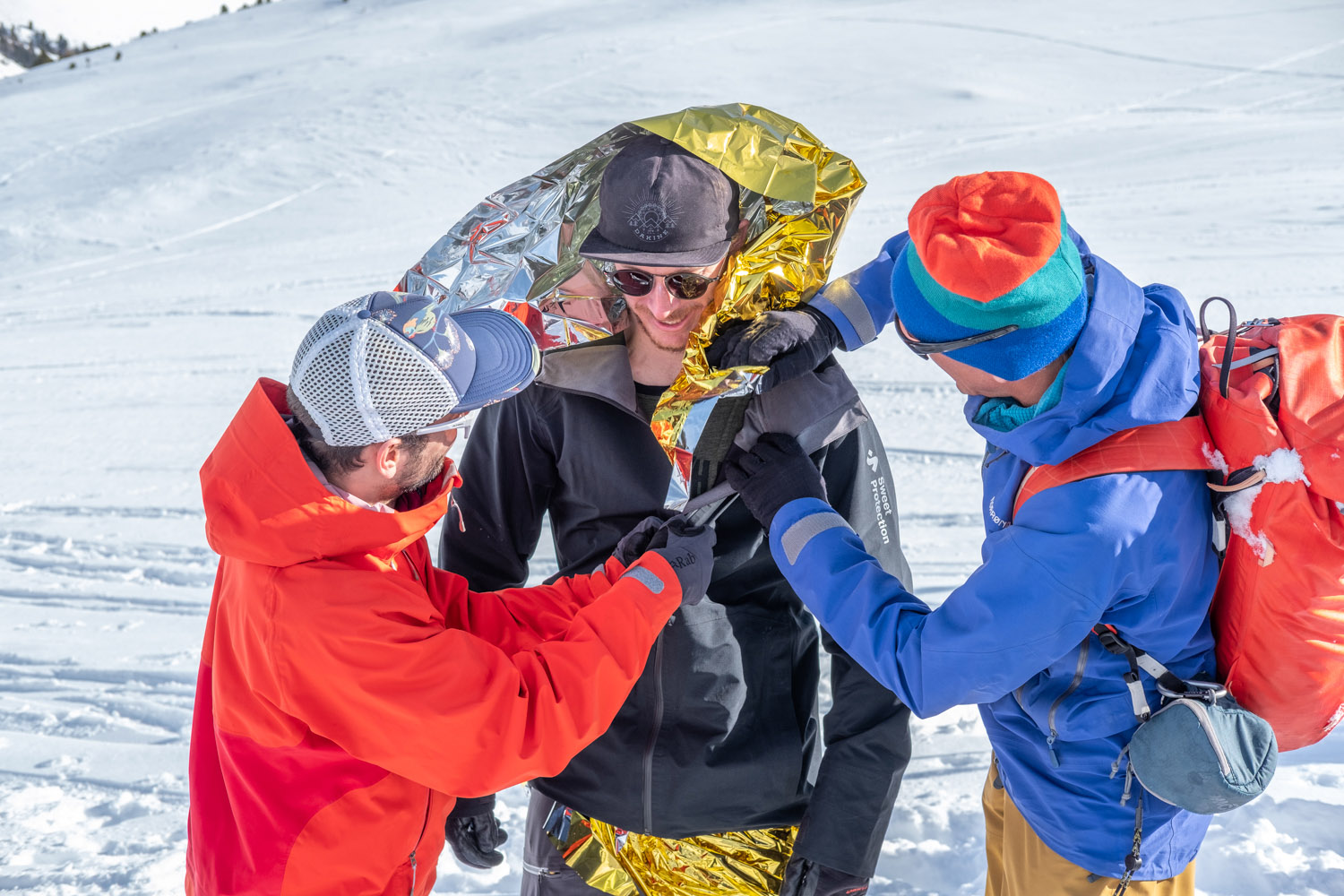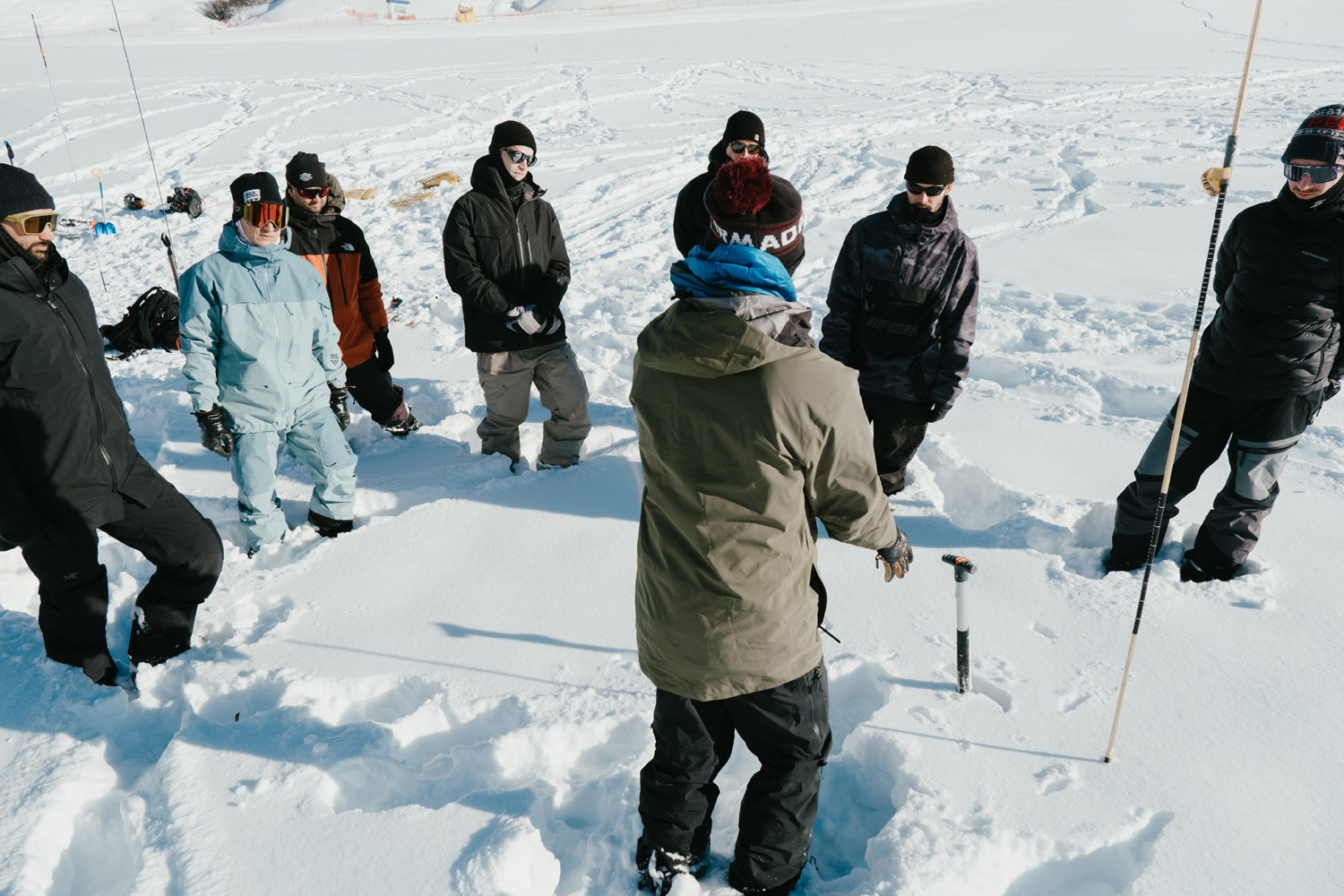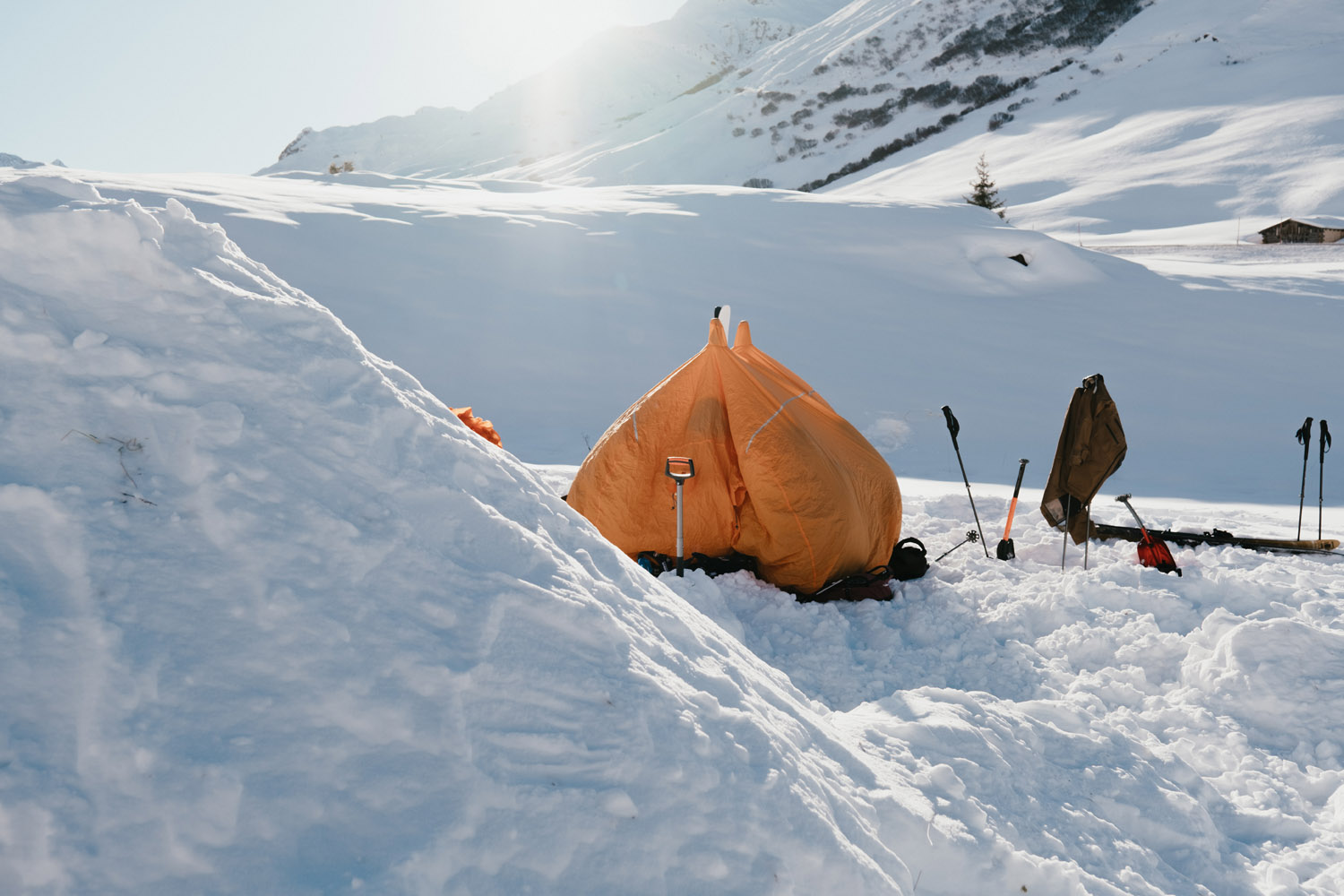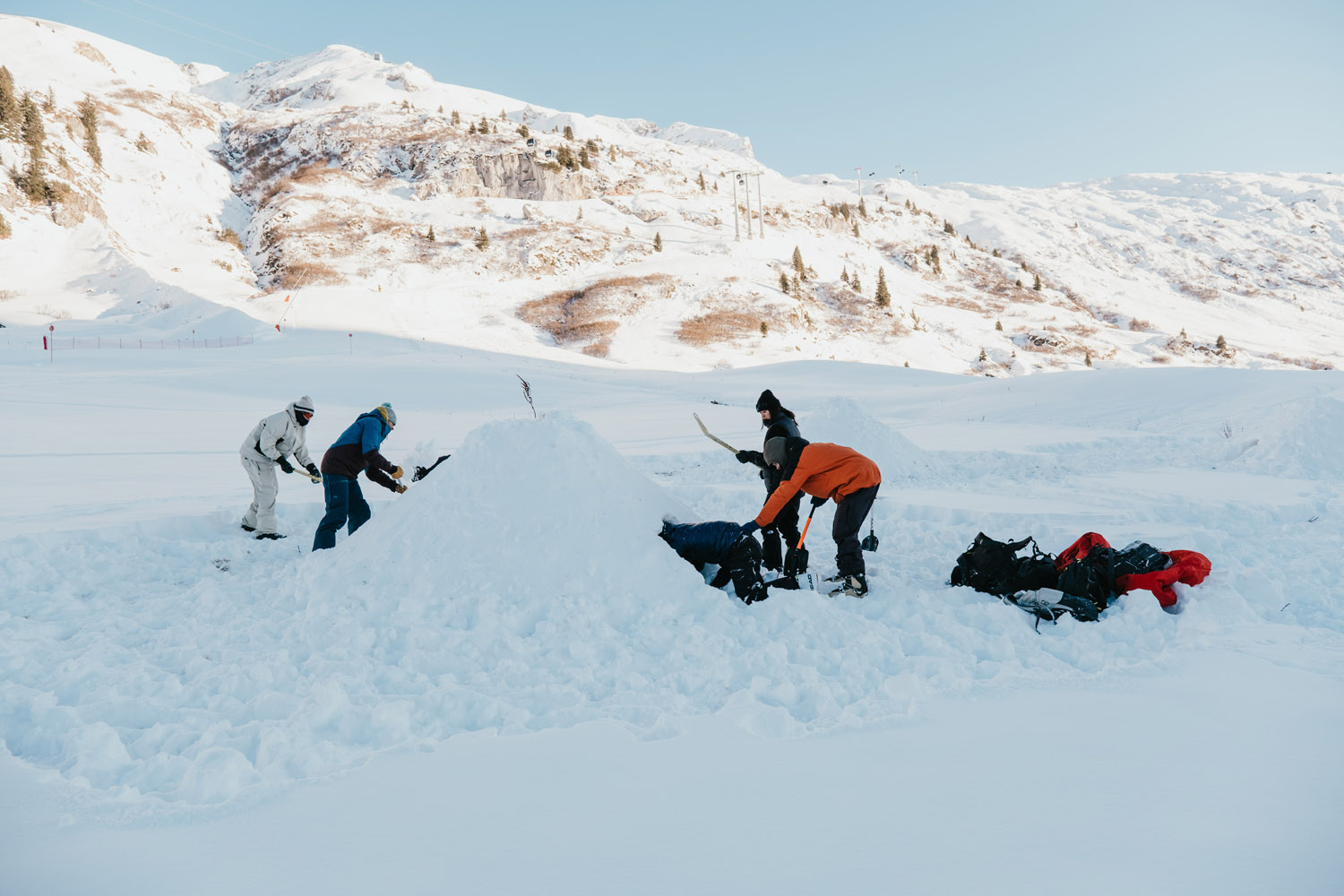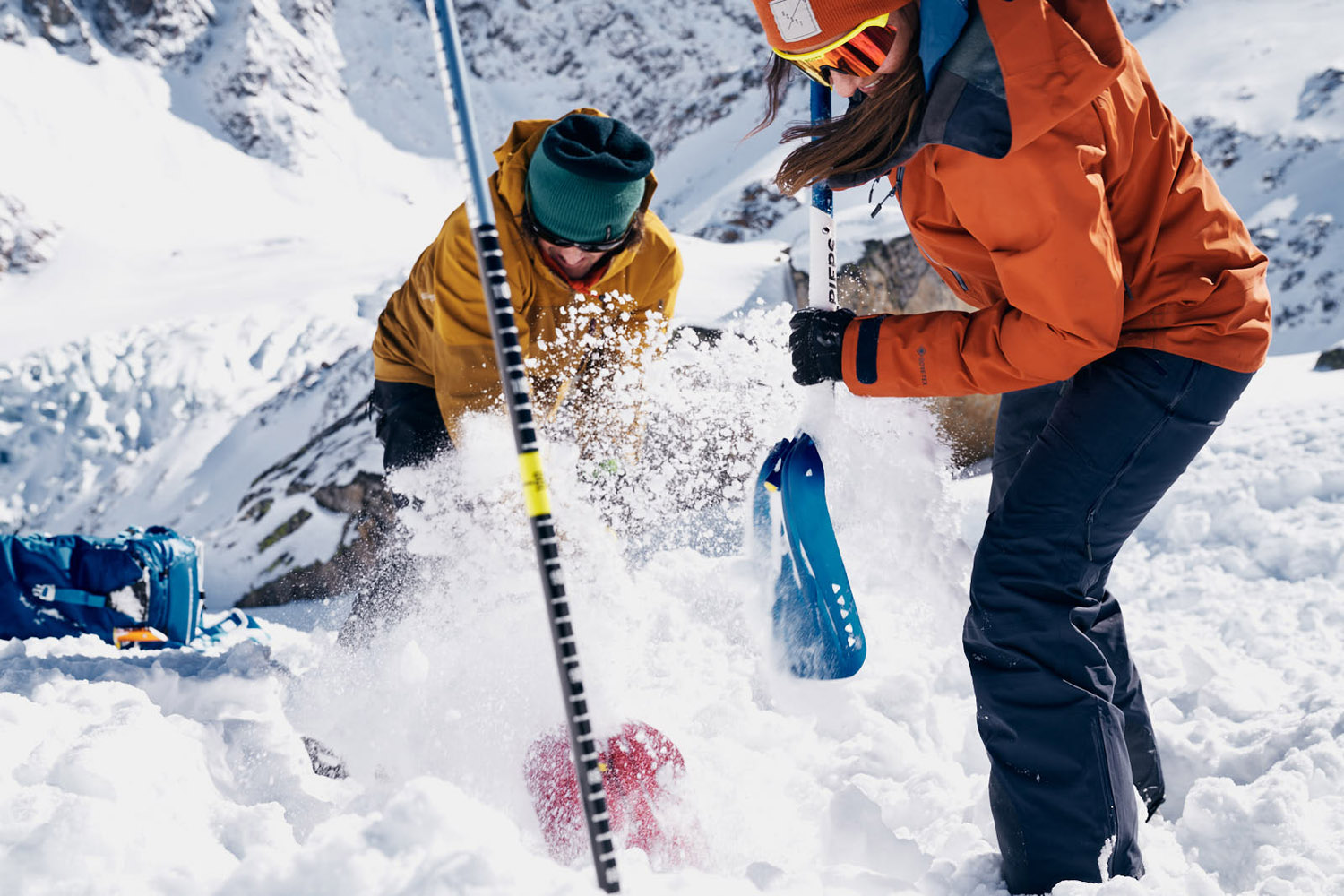AVALANCHE COURSES
Emergency and avalanche know-how in Tyrol
References
Structure of our avalanche courses
Our avalanche courses are modular and everyone can choose the course that suits their current needs. The choice depends on your knowledge, experience and interests. Below we give you 3 levels in which order we recommend our courses. Get in at the level that seems appropriate for you. Keep in mind that there are two fundamentally different contents in avalanche courses. On the one hand, the topic of snow and avalanches, where you can further expand your theoretical and practical knowledge with each course, and on the other hand, the emergency topic. The latter is comparatively less complex, but requires more repetition and practice to be able to fall back on it quickly in an emergency.
Level 1: Rookie Avalanche Day
The introduction to off-piste skiing. You will get a lot of input on the material and its correct application. How does an avalanche transceiver search work and how do you shovel properly. We will also show you the ascent technique with skins and discuss the situation report. After the course you will know what the 30° rule is and what to look out for in order to choose tours with low avalanche risk.
Level 2: Basic Backcountry Camp / Basic Freeride Camp
For those who already have some off-road experience and want to plan and actively participate in off-road decisions in the future. Content includes tour planning, understanding the avalanche situation report, risk assessment using probabilistic methods, and handling emergency equipment. After this avalanche course, you will be able to plan tours and descents yourself using slope gradient maps, assess steepness and evaluate your risk with the help of methods such as Stop or Go or Skitourenguru. You will also learn the correct behavior in an emergency.
Level 3: Safety Days
Our main course: A 2.5-day avalanche course for freeriders and backcountry skiers who already have independent experience in the backcountry and are not comfortable with a purely slope-based approach to risk assessment. Under the guidance of professional mountain guides, it goes from snow and terrain-based decision making to emergency management with complex scenarios. The course objective is to provide a toolbox to assist you in making decisions in the field. We deal intensively with the matter of snow and explain to you what weak layers are, how to recognize and estimate them. Additionally, we place a strong focus on consequence-based thinking and strongly incorporate terrain into our decision making. On emergency day, we work through how our equipment works and its pitfalls before diving into complex scenarios where you can really practice. And under close observation and with feedback rounds afterwards.
In-depth emergency and avalanche courses
First aid after avalanche
Since this aspect is somewhat neglected during our 2.5-day Safety Days due to time constraints, we are offering another separate course here for anyone interested. This course can save lives in an emergency, and we recommend that everyone brush up on first aid skills regularly. After all, should you ever have really bad luck in your decision-making, you’ll need to master first aid as well as emergency management.
Snow Understanding Days
Our snow understanding course is a new format where we aim to learn about avalanche development over an entire winter. It is suitable for anyone who has already attended our Safety Days or similar courses, or who has already studied snow and avalanches intensively on their own. During a classic avalanche course on a weekend, only the immediate situation on site can be analyzed and discussed. This often leaves little room to deepen the understanding of how weak layers develop over the course of a winter. However, it is precisely the understanding of this process that is one of the most important building blocks for recognizing avalanche risks early on and being truly passive on the critical days. So if you want to develop a deeper understanding of snowpack, this is the place for you.
Winter ResQ Days
Emergency Management Course for Winter Scenarios. This is not only about avalanche accidents, but also about first aid for injuries and medical emergencies. We are also looking at heat preservation, bivouac construction, makeshift evacuation, and emergency call options in areas without reception. If you want to be as prepared as possible for possible problems in the mountains, you will have the necessary tools after this course.
Better ski technique for a safer winter
You should also think about your skiing technique. After all, if you can’t descend confidently in the terrain or snow type you’re traveling in, you’re at a higher risk of avalanches. A fall can cause a great deal of stress on the snowpack and trigger avalanches that might not have come off if the slope had been skied without a fall. From level 3 on, we will work a lot with terrain-based approaches to risk management, but these often only work really well for solid drivers. Therefore, take care of your skiing technique and gladly attend one of our technique courses with state ski instructors. The material also plays a role, of course. Here you will find a little input on this: Which ski is the right one for me?
Pictures of our avalanche courses
Your course instructors
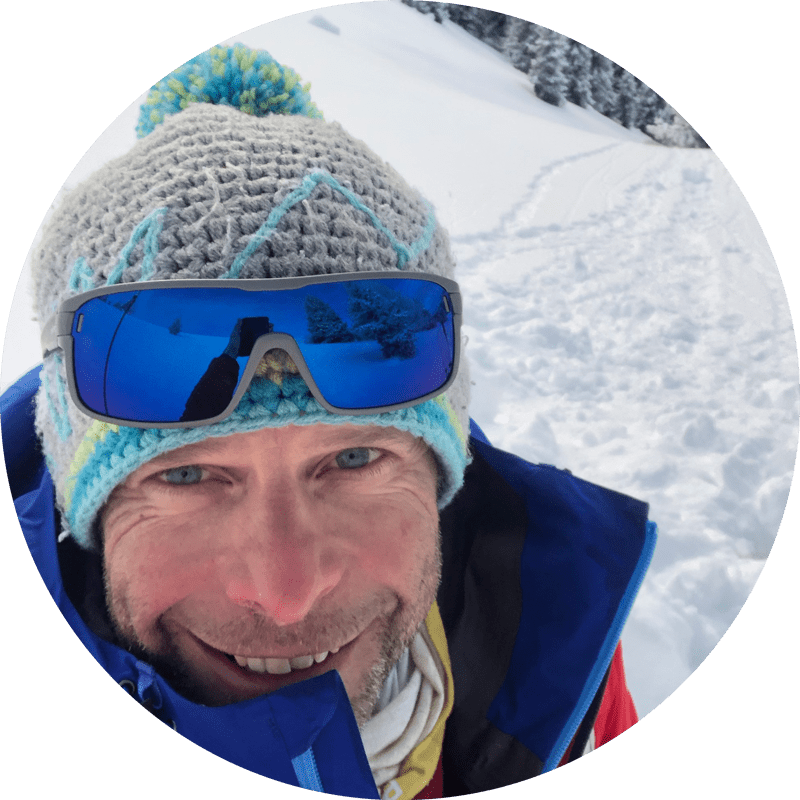
Paul Mair from mc2alpin has been working as a mountain and ski guide, among other things, since 2001. During the winter you can meet him almost only outside, either on skis or with the ice tools, and that both privately and professionally. He is a trainer and course leader at the Association of Austrian Mountain and Ski Guides, is active in avalanche commission training and is also a sworn and court-certified expert in alpinism, avalanche protection, avalanche accidents and avalanche science. He can also be found time and again as the author of relevant technical literature on the subject of snow and avalanches. As a communication trainer, he is of course also an excellent speaker.
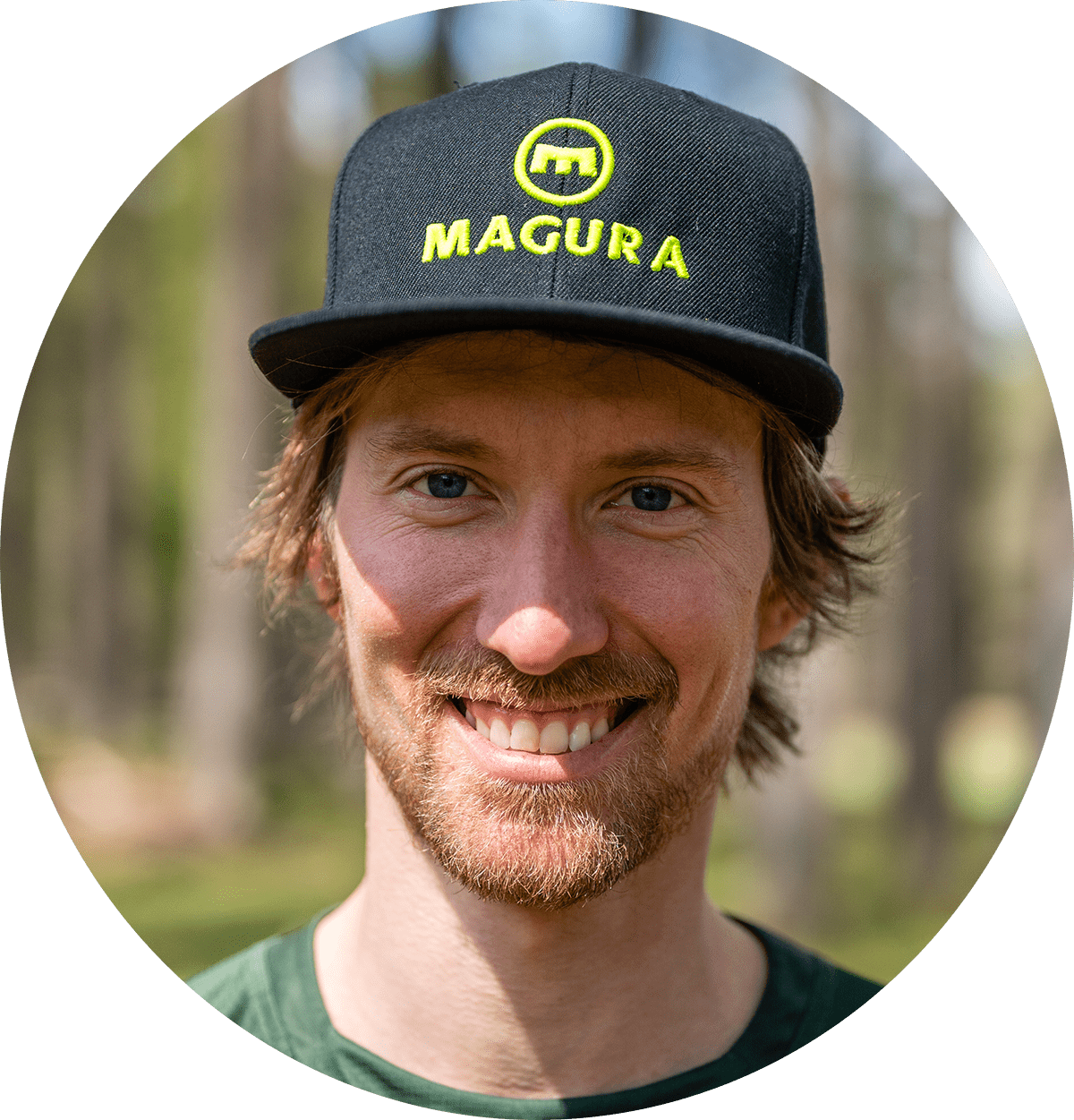
Markus Emprechtinger has been a full-time mountain and ski guide since 2017. Each winter adds well over 100 days in the snow, filled with relevant decisions. So planning, analyzing snow conditions and weather patterns is part of the daily routine. It’s not just about finding safe terrain, the snow quality has to be right too. The practice is underpinned by theoretical knowledge from the study of meteorology.
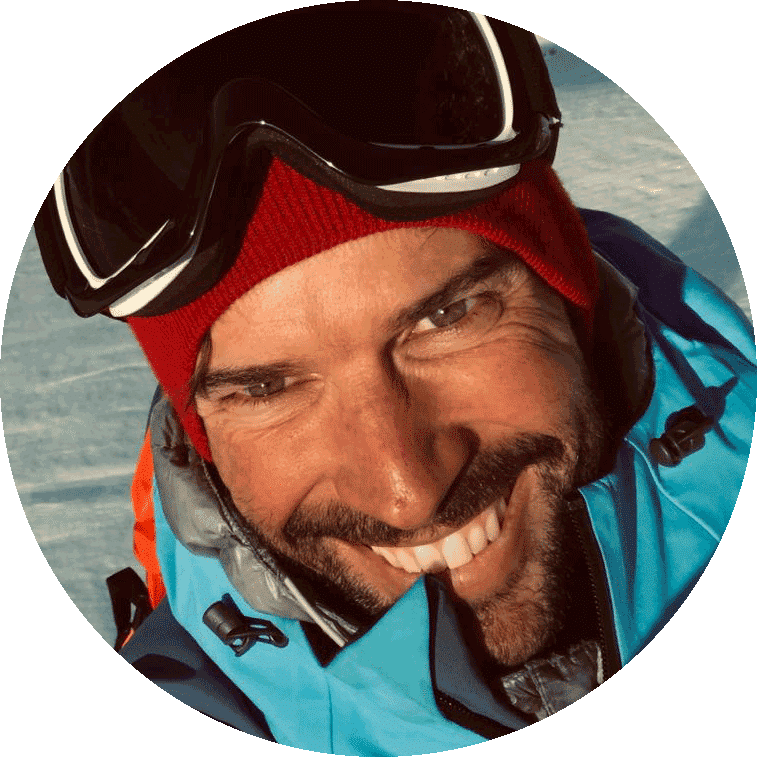
Thomas Wanner has been on the move in the snow since his childhood and since 2012 can be found as a mountain guide with guests on winter tours. At the same time, he knows exactly what is important. The quality of the snow during the descent has a high priority, but of course the necessary safety must be guaranteed. Privately, of course, he hardly misses a powder day and, according to his own statements, does not need a ski under 108mm center. As his career progressed, he was drawn more and more to the education sector. Many already know him from instructor as well as exercise leader courses or the numerous lectures on the subject of avalanches.
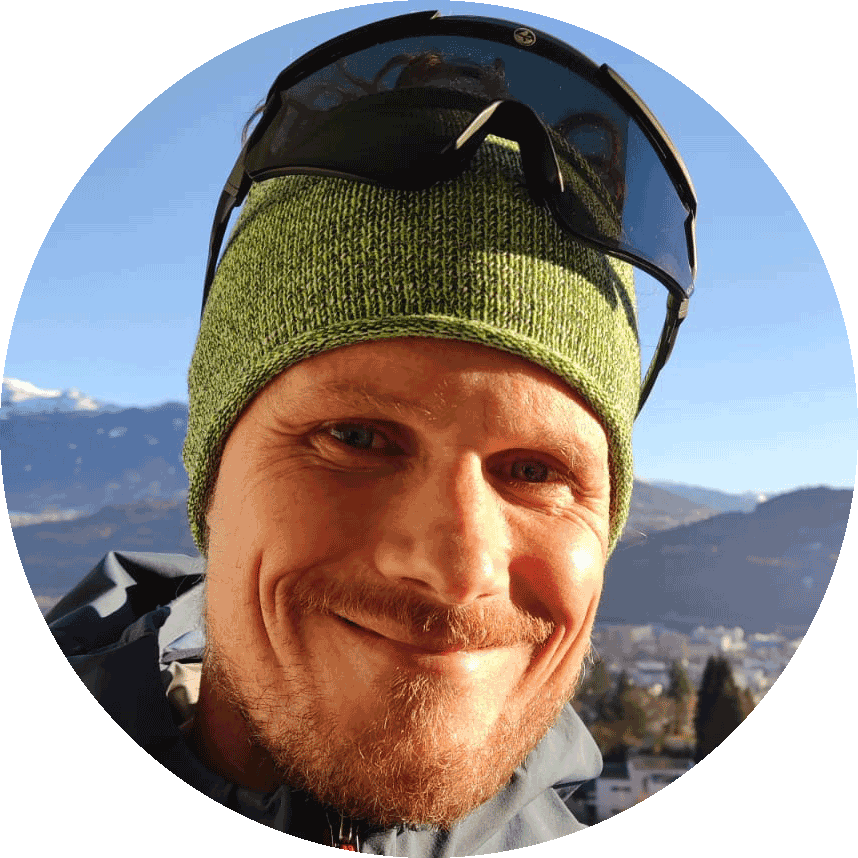
Michael Mayrhofer – A Saalbacher who moved to Innsbruck many years ago. For a long time he was simply a ski instructor, full time. Thereby always on the highest level and also at some freeride contests at the start. Meanwhile, the educator, mountain guide, coach and much more. His experience, his trained eye and his easy to understand and motivating way with which he explains complex things, have so far improved almost everyone technically with whom he was on the road. Despite his skiing career, Michi is not one to follow the curriculum. When skiing, not everyone should look the same, it must be free, dynamic and yet stylish.








